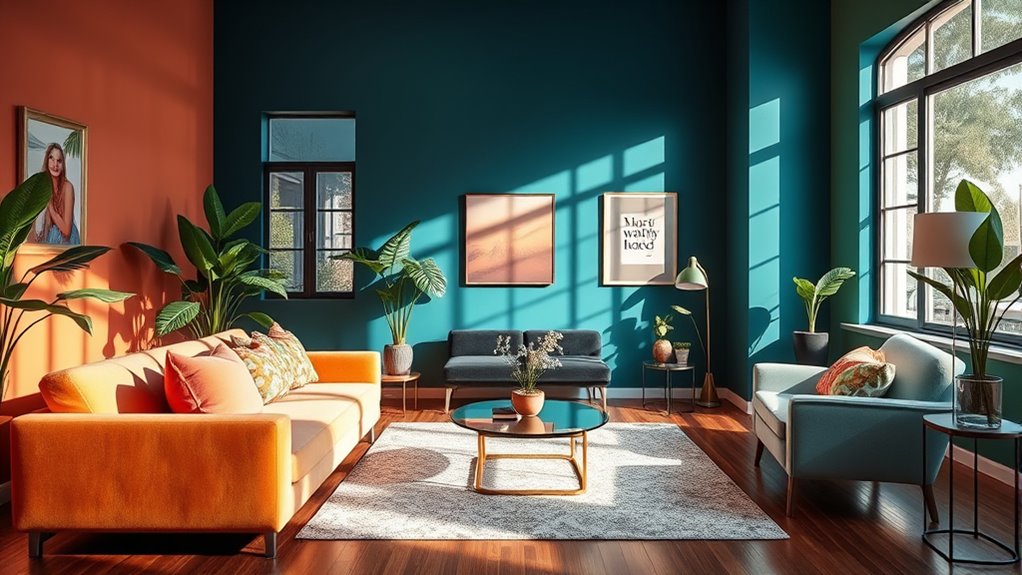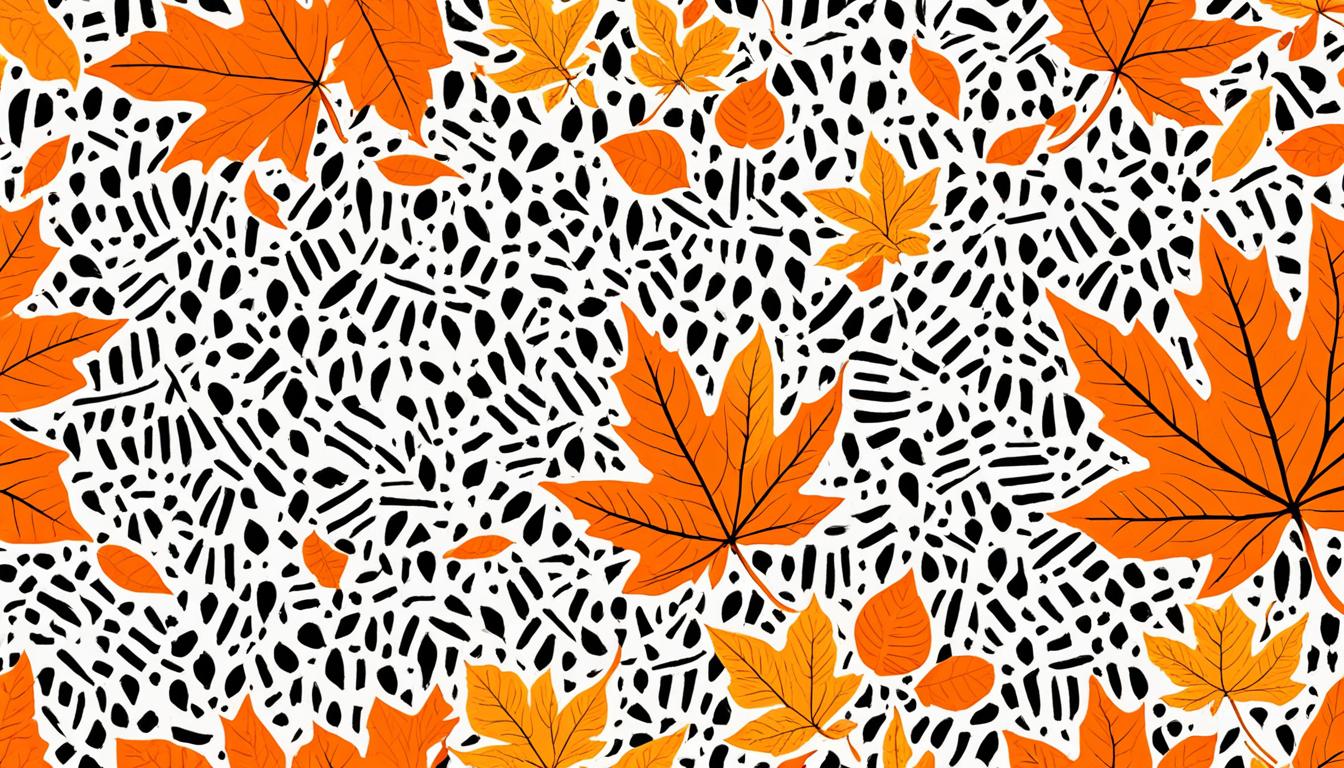Designing your space based on your personality colors helps create an environment that feels authentic and supports your emotional well-being. Choose bold reds or oranges if you’re energetic and outgoing, or go for calming blues and greens if you seek tranquility. Neutral tones can provide a sophisticated backdrop that lets your personality shine through personal accents. By aligning colors with who you are, you’ll craft a space that feels welcoming and genuinely yours, with even more tips waiting for you.
Key Takeaways
- Select colors that reflect your personality traits to create an authentic and personalized living space.
- Use bold hues like red or orange to energize energetic or creative individuals, and soft tones like blue or green for calmness.
- Incorporate neutral shades as versatile backdrops that support personalized accents aligning with your emotional needs.
- Combine intentional color choices with space organization strategies for a harmonious and functional environment.
- Reflecting your personality through color enhances comfort, mood, and overall satisfaction with your living space.

Your living space can reflect more than just your style; it can mirror your personality through the colors you choose. Colors aren’t just about aesthetics—they carry emotional connotations and influence how you feel in a space. This is where color psychology comes into play. By understanding how different hues impact mood and behavior, you can craft a home that truly resonates with who you are. When you select colors intentionally, your decor becomes personalized, turning your space into a reflection of your inner self.
If you’re energetic and adventurous, bold colors like reds and oranges can energize your environment. Red, for instance, is associated with passion and excitement, making it perfect for spaces where you want to stimulate activity or motivation. Orange combines the warmth of red with a more playful vibe, fostering creativity and social interaction. Incorporating these shades into your decor isn’t about merely following trends; it’s about aligning your surroundings with your personality traits. When your space embodies your personality, it feels more authentic and inviting.
On the other hand, if you’re someone who values calm and tranquility, softer hues like blues and greens can help create a peaceful retreat. Blue is linked to trust, serenity, and focus, making it ideal for bedrooms or workspaces. Green, associated with nature and growth, promotes balance and renewal. By integrating these colors into your decor, you craft an environment that nurtures your mental well-being. Personalized decor isn’t just about choosing colors; it’s about selecting shades that resonate with your emotional needs and reflect your identity.
For those who see themselves as sophisticated or elegant, neutral tones like beige, taupe, or gray can serve as a perfect backdrop. These hues provide a versatile canvas that allows your accessories and furnishings to stand out, emphasizing your refined taste. Neutrals also give you flexibility to incorporate accents of brighter colors, creating a layered, personalized aesthetic without overwhelming the senses. When your decor aligns with your personality, it feels more like a sanctuary—an extension of yourself rather than a generic design.
Ultimately, designing spaces based on personality colors requires awareness and intentionality. By understanding how color psychology influences mood and behavior, you can choose shades that enhance your daily life. Personalizing your decor with colors that reflect who you are ensures your living space becomes more than just a place to stay—it becomes a true representation of your identity. When your environment mirrors your personality, you cultivate a space that energizes, calms, or inspires you, making your home uniquely yours. Additionally, incorporating space organization strategies can help you create a harmonious environment that supports your color choices and personal style.
Frequently Asked Questions
How Do Personality Colors Influence Mood in a Space?
Your personality colors considerably influence your mood in a space through color psychology and emotional impact. Warm colors like red and orange energize you, boosting excitement and motivation. Cool colors like blue and green promote calmness and relaxation. By choosing colors aligned with your personality, you create an environment that enhances your emotional well-being, making you feel more comfortable, focused, or energized depending on your needs.
Can Personality Colors Be Combined for a Balanced Environment?
Yes, you can combine personality colors for a balanced environment. Focus on color harmony by selecting shades that complement each other, creating a cohesive look. Personal color blending involves merging colors that reflect different aspects of your personality, resulting in a space that feels harmonious and inviting. Experiment with different combinations to find what resonates best, ensuring your space supports positive moods and promotes comfort.
Are There Cultural Differences in Interpreting Personality Colors?
You’ll find that cultural color symbolism influences how people interpret personality colors around the world. While some hues evoke similar feelings, cross-cultural color preferences can vary widely, meaning what feels calming in one culture might seem energetic elsewhere. By understanding these differences, you can create spaces that resonate universally, respecting local traditions and preferences, making your environment both welcoming and meaningful to diverse audiences.
How Do Personality Colors Impact Productivity and Focus?
Personality colors considerably impact your productivity and focus through color psychology. When you choose colors aligned with your personal preferences, you create an environment that boosts motivation and concentration. For example, blue can promote calmness and clarity, while yellow energizes creativity. By understanding how these colors influence your mood, you can tailor your space to enhance efficiency, making it easier to stay focused and accomplish tasks effectively.
What Are Common Mistakes When Designing With Personality Colors?
Don’t let color psychology misconceptions lead you astray; one common mistake is overusing bold hues, which can overwhelm rather than inspire. You might think every space needs vibrant colors to energize, but balance is key. Relying solely on intense shades neglects subtler tones that promote calm and focus. Remember, harmony in color choices creates a space that truly reflects personality without clashing or causing distraction.
Conclusion
By choosing colors that reflect your personality, you create spaces that inspire, energize, and soothe. When your environment mirrors who you are, it becomes more than just a place—it becomes a sanctuary, a reflection of your true self. Embrace the power of color to transform your space, to elevate your mood, and to foster a sense of belonging. Make your space a personal masterpiece—vivid, authentic, and uniquely you.
Felicity, our Author, pens in-depth articles and guides that delve into the heart of personal discovery. Her narrative-driven approach weaves together theory, practice, and personal anecdotes, making the journey of self-exploration both relatable and inspiring. Felicity’s contributions help illuminate the path for those seeking a deeper understanding of themselves and their relationships.










